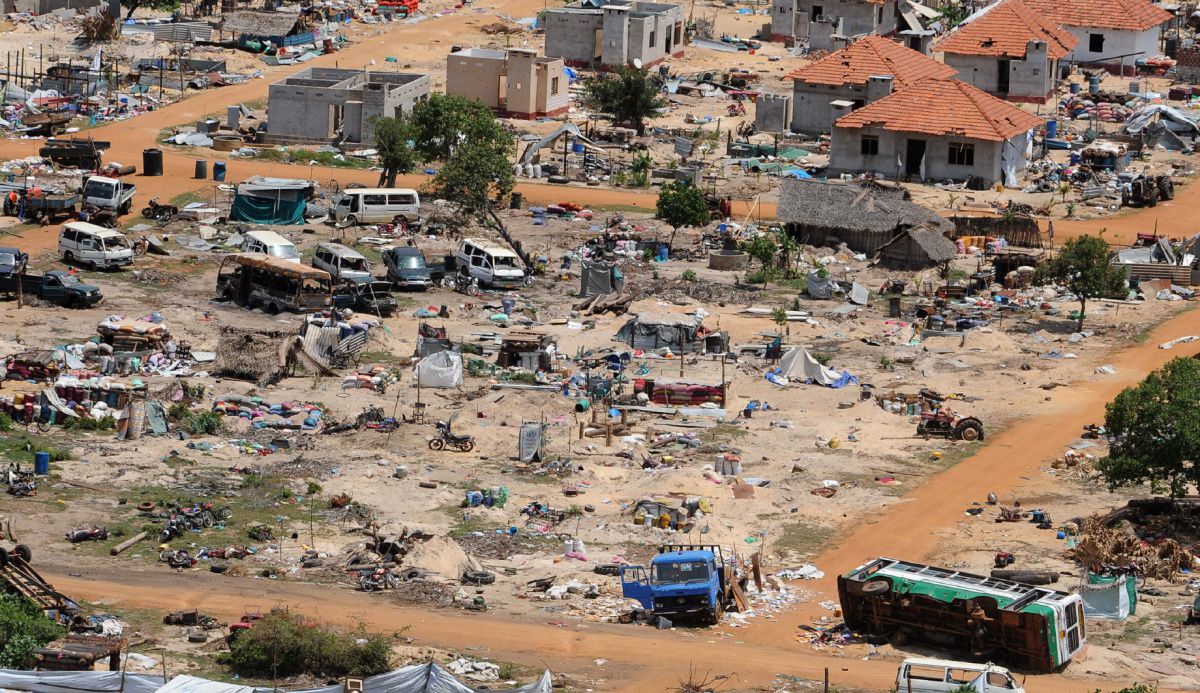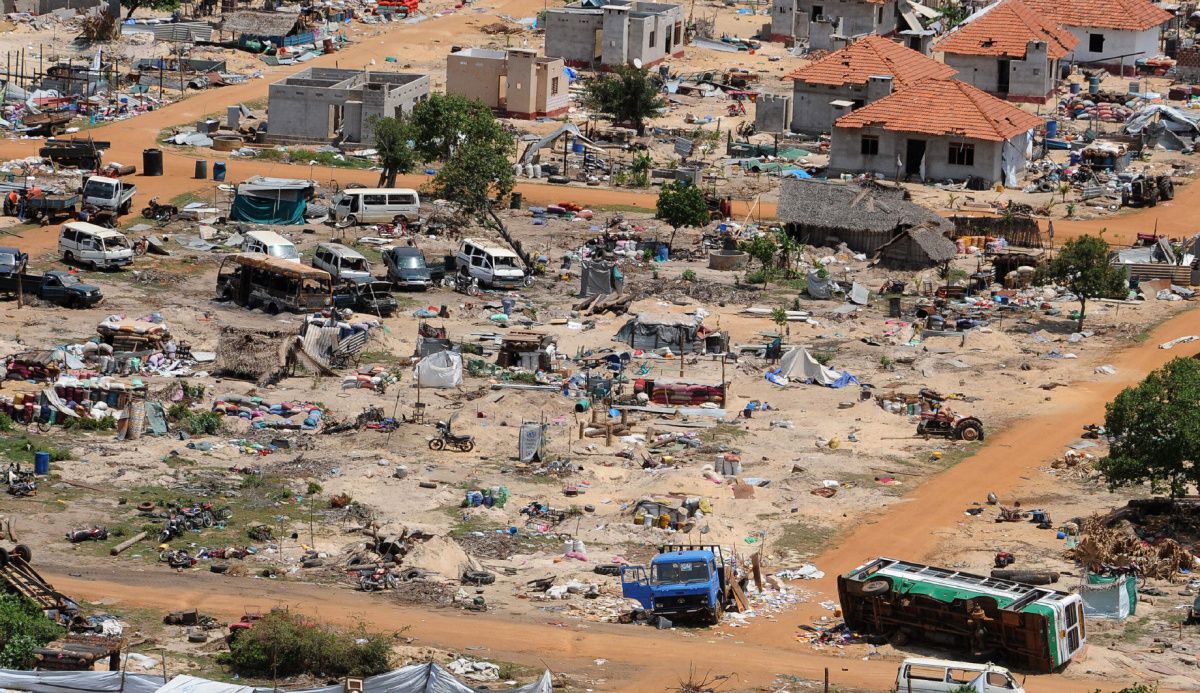12 years today - A massacre in Mullivaikkal
18 May 2021
Marking 12 years since the Sri Lankan military onslaught that massacred tens of thousands of Tamils, we revisit the final days leading up to the 18th of May 2009 – a date remembered around the world as ‘Tamil Genocide Day’. The total number of Tamil civilians killed during the final months is widely contested.
After providing an initial death toll of 40,000, the UN found evidence suggesting that 70,000 were killed. Local census records indicate that at least 146,679 people are unaccounted for and presumed to have been killed. By examining different sources, including from the United Nations, census figures and World Bank data, the International Truth and Justice Project (ITJP) found that the highest estimate of those killed during that final phase could be as large as 169,796.
See more at www.RememberMay2009.com, a collaborative project launched last year, between the Adayaalam Centre for Policy Research, Tamil Guardian and 47 Roots.
18th May 2009

Photograph: A scene of devastation in Mullivaikkal pictured days after the Sri Lankan military had overrun the area.
A massacre in Mullivaikkal
The Sri Lankan military overruns the last remaining ‘No Fire Zone’.
TamilNet receives a final phone call before it loses all communication with its correspondents in the field.
A US State Department report says there are “accounts from witnesses in the NFZ of SLA soldiers throwing grenades into several civilian bunkers”.
“Some civilians also reported seeing an army truck running over injured people lying on the road. Later in the day, the SLA brought in earth-moving equipment to bury the bodies that had been lying outside for two days or more. Civilians reported seeing among the corpses injured people who were asking for help, and believed that the SLA did not always attempt to separate the injured and the dying from those who had died.”
The OISL says,
“Multiple witnesses described scenes of devastation, with hundreds of bodies of people killed by shelling scattered across areas within the NFZs. Entire families had been killed as bombs landed in bunkers they were sheltering in. Witnesses talked of having to leave dead family members behind as they were further displaced by the shelling. Many witnesses were profoundly traumatized by their experiences and memories of the shelling and the devastation they witnessed.”
A Sri Lankan soldier described to Channel 4 the grotesque humanitarian violations committed during the final days of the conflict. See a clip of his testimony below.-
The UN Panel of Experts report says,
“The dead were strewn everywhere; the wounded lay along the roadsides, begging for help from those still able to walk, but often not receiving it. Some had to be torn away from the bodies of their loved ones left behind. The smell of the dead and dying was overwhelming.”
Executing the surrendered

Hundreds of other LTTE cadres, their families and other Tamils civilians who surrendered to the Sri Lankan military were executed. Others have been forcibly disappeared.
Last year the ITJP released the names of at least 293 people who were seen surrendering to the Sri Lankan military and have seen been disappeared. Among those is Father Joseph, who was last seen boarding a Sri Lankan military bus with several LTTE cadres whose surrender he had facilitated.
The OISL states,
“There are also reasonable grounds to believe that a number of LTTE cadres, such as those belonging to the political wing, and other individuals not or no longer taking direct part in hostilities, including children, were also extrajudicially executed.
“Based on this forensic analysis of photographic as well as video material, witness testimonies and open sources, OISL concludes that there are reasonable grounds to believe that LTTE senior political wing leaders Balasingham Nadesan and Seevaratnam Puleedevan as well as Nadesan’s wife Vineetha Nadesan may have been executed by the security forces sometime after 06:00 on 18 May.”
See more from the ITJP on this particular case – dubbed the White Flag incident - here.
Amongst the other emblematic cases are those of LTTE leader Colonel Ramesh who was filmed in Sri Lankan custody, being interrogated by soldiers. Later photographs show he was shot dead. Balachandran Prabhakaran, the 12-year-old son of the LTTE leader Veluppillai Prabhakaran, was also photographed in military custody and then shot dead, as well as Tamil TV presenter Isaipriya.

Photograph: Balachandran Prabhakaran pictured in Sri Lankan military custody. Later photographs show him dead, with several bullet wounds in his chest.
Several videos have since emerged, captured by Sri Lankan soldiers on their mobile phones, as they execute naked and tied up Tamils. Some laugh as they shoot the blindfolded Tamils in the head.

Rape and sexual violence
The UN Panel of Experts found,
“Rape and sexual violence against Tamil women during the final stages of the armed conflict and, in its aftermath, are greatly under-reported… Nonetheless, there are many indirect accounts reported by women of sexual violence and rape by members of Government forces and their Tamil-surrogate forces, during and in the aftermath of the final phases of the armed conflict."
“Many photos and video footage, in particular the footage provided by Channel 4, depict dead female cadre. In these, women are repeatedly shown naked or with underwear withdrawn to expose breasts and genitalia. The Channel 4 images, with accompanying commentary in Sinhala by SLA soldiers, raise a strong inference that rape or sexual violence may have occurred, either prior to or after execution.”
The OISL concluded,
“One of the most disturbing findings of the OISL investigation has been the extent to which sexual violence was committed, often extremely brutally, by the Sri Lanka security forces, with men as likely to be victims as women. The prevalence of rape, often on repeated occasions, was particularly shocking. OISL did not find any information to suggest that the LTTE was responsible for sexual violence, and different sources indicated that anyone found responsible for sexual abuse or violence risked harsh punishment by the LTTE.”
“Several witnesses spoke of women being taken away “towards the jungle” by soldiers, allegedly for sexual abuse, as they crossed over into Government-controlled territory. Some said that they then heard screaming. One witness, for example, described a female cadre being taken behind a sentry post by two soldiers, and was visibly distraught and crying when brought back some 20 minutes later. In another case, the source recounted seeing soldiers dragging young women into the bushes and hearing screams. He said that he could also hear gunshots coming from the area. Another witness stated that she heard four or five “voices of girls screaming in the bushes” and calling to be saved as she approached a sentry point.”
Human Rights Watch reported one woman’s experience.

300,000 in camps
At the time, it was thought to be the largest displacement camp in the world. Many Tamils would remain there for years.

Arunachalam Camp, Menik Farm 19 Aug 2009
A cover up
The OISL says it is “concerned by serious allegations that SLA may have destroyed evidence after the end of the conflict, including by digging up and burning bodies that had been buried in the conflict zone”.
“In addition to those who died in hospitals, multiple witness testimonies recount burying civilian family members or seeing others bury individuals killed in the shelling before they hurriedly fled. There has been no systematic recording of the exhumation of graves since the war. Extensive forensic anthropological expertise will be required to examine those bodies that were buried and may be exhumed as part of investigations. “
The OISL concluded,
“The patterns of commission of gross human rights violations and serious violations of international humanitarian law, the indications of their systematic nature, combined with the widespread character of the attacks all point to the possible perpetration of international crimes. These allegations must be promptly, thoroughly and independently investigated and those responsible should be brought to justice.”



No comments:
Post a Comment
Note: only a member of this blog may post a comment.